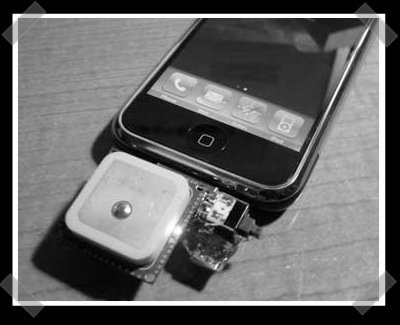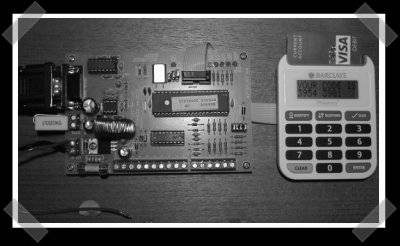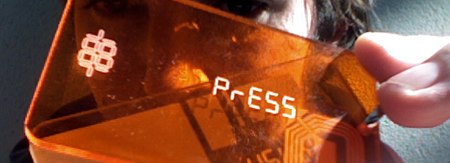
The boys over at engadget put this up while I was working it over, but I’m still gonna hit it. [Curt] sent in the iPhone GPS he put together. He’s using a micro-controller to send the ground toggle handshake we mentioned in the iPhone serial tutorial, along with a small NMEA serial GPS module. After the handshake is completed, the controller hands over the serial port to the GPS output. (Since the handshake only needs the ground toggle, I’d guess that the module is connected to the TX/RX lines all the time.) By the way, the GPS looks like this SiRF II board sold by spark fun electronics.
Cellphone Hacks537 Articles
IPhone Serial Access Tutorial

[TheRain] sent in his tutorial on using the iPhone’s serial port. Apparently there’s a hardware trick required to enable two way communication. Whatever device is attached to the iPhone needs a secret handshake to get things talking both ways. Once the serial ground has been strobed high to low in the proper order, things will work like normal.
Python Web Based Serial Control
 [Benjamin] sent in his efforts to use Python to provide a web interface for his Aurdino. Python is usually pretty easy to manipulate, so it might be just the thing for someone looking to add a web control to a project with an open serial interface.
[Benjamin] sent in his efforts to use Python to provide a web interface for his Aurdino. Python is usually pretty easy to manipulate, so it might be just the thing for someone looking to add a web control to a project with an open serial interface.
If you’ve got a hack you want to share, use the tips line.
How-To: Replace A Mini USB Port (on Your Cellphone)

At some point, just about everyone manages to mess up their precious electronics. In this case, someone (not me) somehow managed to totally demolish the mini USB port in their new Motorola cell phone. Surface mount repairs can be challenging without some serious tools, but it’s possible to replace parts without a re-work station. (Guess what I’m getting for Christmas this year.) Today I’ll show you that’s it’s possible to repair a surface mount part with some fairly inexpensive tools.
Continue reading “How-To: Replace A Mini USB Port (on Your Cellphone)”
SMS PIN Sentry Reader

[Mr G] in London sent in his pin sentry hack. He wasn’t pleased that the device looks like an old calculator, so he rigged up a SMS board to send him his pin on demand. He multiplexed the output of the display driver to the SMS board. When he authenticates from his phone, the board sends a message with the latest code.
Cell Phone Taser

I’m not going to reccomend it, but [cameron] modded his Sony Ericsson k800i to tase people as well as take pictures. Apparently, the k800i has a xenon flash – meaning that it’s got a high voltage potential available to drive the flash. He added a pair of 16uf caps and scored a good 300 volts to share with the unlucky.
ToorCon 9: Real World Fuzzing

We dropped in on [Charlie Miller]’s fuzzing seminar at the end of the day yesterday. Fuzzing become a fairly popular topic in the last year and essentially involves giving a program garbage input, hoping that it will break. If it can’t handle the fake data and fails in a non-graceful fashion, you could have found a potentially exploitable bug. Fuzzing is a fairly simple idea, but as Charlie points out, without some thinking while you’re doing it it’s unlikely to be very productive.










